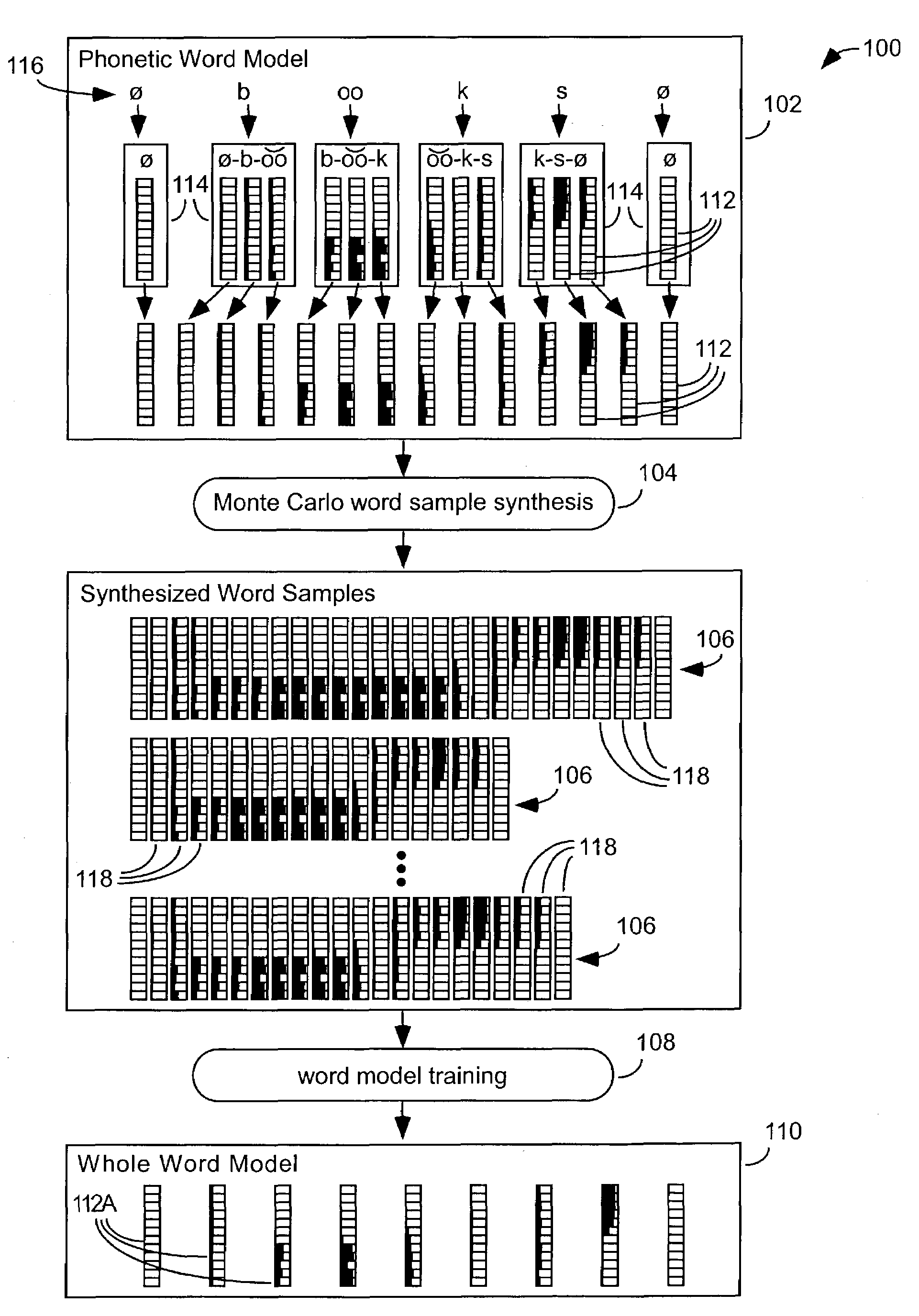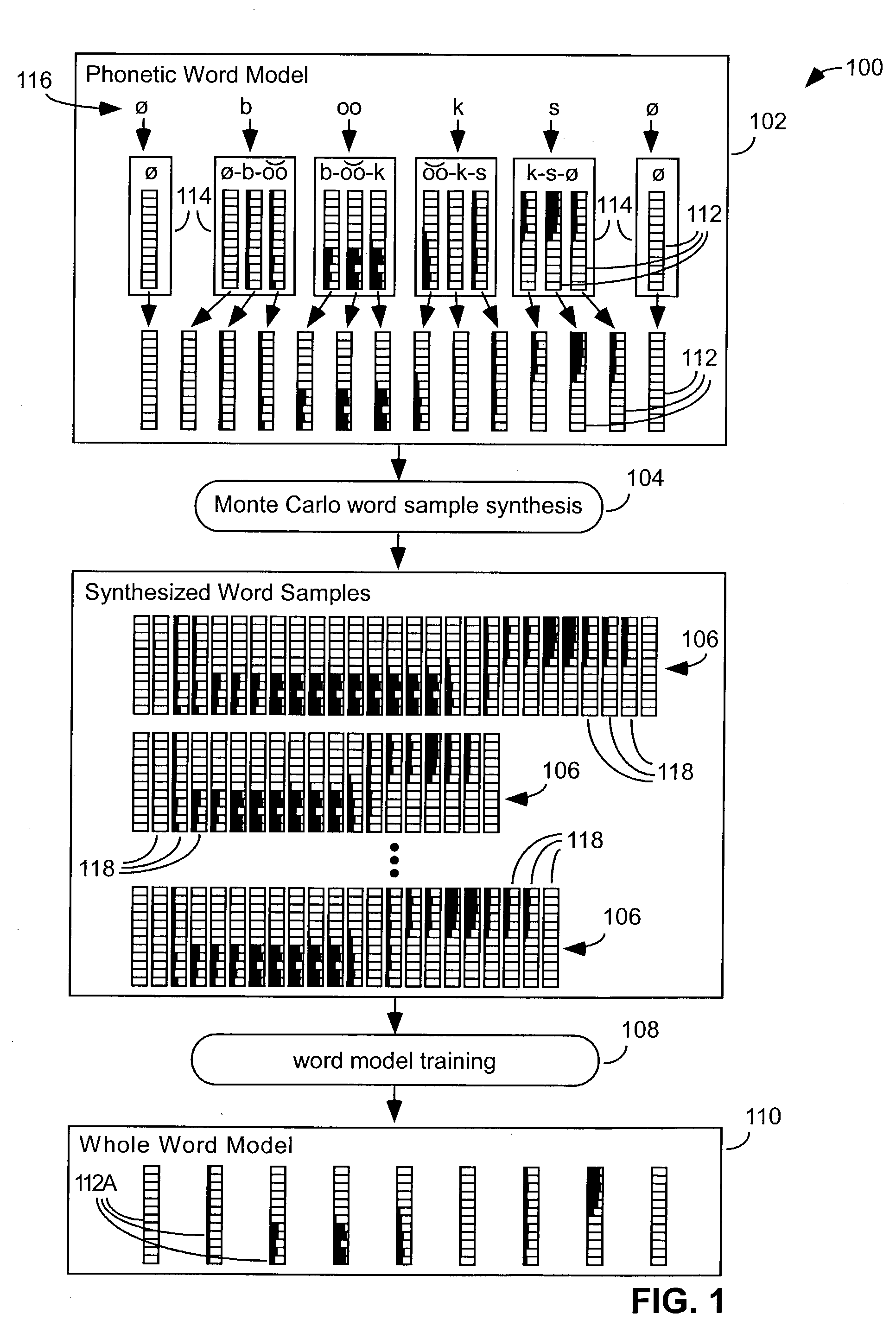Training speech recognition word models from word samples synthesized by Monte Carlo techniques
a word model and monte carlo technology, applied in the field of training new speech recognition word models, can solve the problems of reducing the amount of data required to represent a large number of word models, reducing the computation required for recognition of a large number of words, and not being optimal for all speech recognition systems, etc., to achieve slow channel normalization, rapid channel normalization, and slow normalization
- Summary
- Abstract
- Description
- Claims
- Application Information
AI Technical Summary
Benefits of technology
Problems solved by technology
Method used
Image
Examples
Embodiment Construction
[0058]FIG. 1 illustrates how one embodiment 100 of the present invention derives a new word model 110 by performing training 108 on synthesized word samples 106 generated by Monte Carlo techniques 104 from a prior word model 102.
[0059]In the particular embodiment shown in FIG. 1 the prior word model 102 is a phonetic word model. This word model includes a sequence of node models 112, which corresponds to the model nodes of a sequence of triphone phonetic models 114, which correspond to the phonetic spelling 116 of the word model's associated word.
[0060]The Monte Carlo word sample synthesis 104 is described below in greater detail with regard to FIG. 3. It randomly generates a plurality of synthesized word samples 106, each of which has a sequence of zero or more frames 118 associated with each node 112 of the phonetic word model. Each such frame has a value for each of the frame's parameters that is randomly generated from within the probability distribution represented by its assoc...
PUM
 Login to View More
Login to View More Abstract
Description
Claims
Application Information
 Login to View More
Login to View More - R&D
- Intellectual Property
- Life Sciences
- Materials
- Tech Scout
- Unparalleled Data Quality
- Higher Quality Content
- 60% Fewer Hallucinations
Browse by: Latest US Patents, China's latest patents, Technical Efficacy Thesaurus, Application Domain, Technology Topic, Popular Technical Reports.
© 2025 PatSnap. All rights reserved.Legal|Privacy policy|Modern Slavery Act Transparency Statement|Sitemap|About US| Contact US: help@patsnap.com



